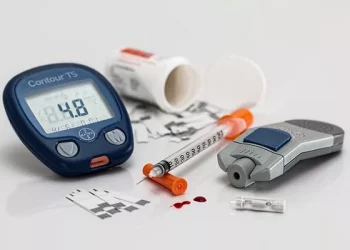A groundbreaking study led by Dr. Haisheng Zhou from Anhui Medical University, China, and Dr. Guoling Zhou from Massachusetts General Hospital, USA, has identified a crucial protein, G protein-coupled receptor 107 (GPR107), as a key factor in protecting kidneys from diabetic nephropathy (DN), a severe complication of diabetes. Published in Molecular Biomedicine, the research uncovers new insights into DN’s underlying mechanisms and proposes GPR107 as a promising therapeutic target for the condition.
Diabetic nephropathy is one of the leading causes of kidney failure globally. The condition is characterized by the thickening of the glomerular basement membrane (GBM), a vital kidney filter, due to abnormal accumulation of collagen type IV (COL4). The study reveals that GPR107 plays a vital role in regulating COL4 levels within the kidney’s podocytes, the cells responsible for filtering blood.
The team discovered that GPR107 is essential for maintaining the balance of COL4 in the kidney. In the kidneys of diabetic patients, reduced GPR107 levels lead to excessive COL4 buildup, which contributes to GBM thickening and kidney damage. Specifically, GPR107 facilitates the internalization of the angiotensin II receptor type 1 (AT1R) in podocytes through clathrin-mediated endocytosis. In the absence of GPR107, this process is impaired, resulting in increased AT1R signaling, which triggers a chain reaction that promotes COL4 production while preventing its degradation.
Key findings from the study include:
A significant reduction in GPR107 levels in kidney tissue from both human DN patients and mice with streptozocin (STZ)-induced DN, a common model for the disease.
Mice without GPR107 showed more severe kidney damage after STZ induction.
In laboratory tests, podocytes lacking GPR107 and exposed to high glucose levels accumulated excessive COL4.
GPR107’s role in internalizing AT1R and regulating signaling pathways controlling COL4 production and degradation.
These results highlight GPR107’s potential as a therapeutic target for diabetic nephropathy. Strategies aimed at restoring or enhancing GPR107 function in the kidneys could offer a new approach to preventing or slowing the progression of this debilitating disease. The research team is now working to identify potential drug candidates to modulate GPR107 activity and further explore its role in kidney health.
Related topics:
Understanding Type 1.5 Diabetes: The Overlooked Hybrid Condition
Queen’s Kilolani Project Supports Native Hawaiians in Diabetes Management


























